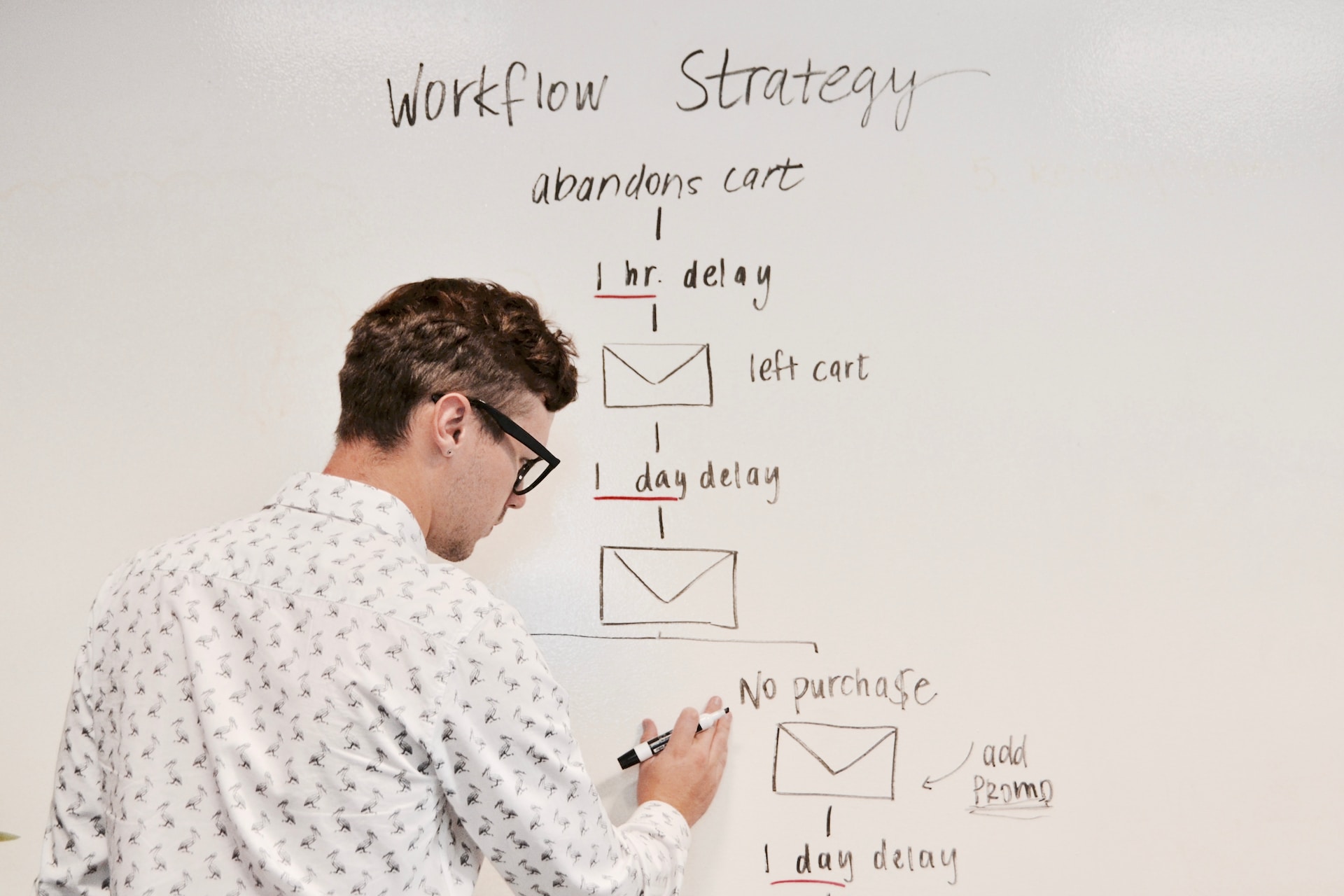Email marketing campaigns have become a cornerstone of
successful growth marketing. With over half the world's population using email, implementing strategic email is vital to connect with your audience. You can use it to promote your brand and drive sales.
Most businesses kick off their journey with generic promotional emails that flood inboxes to a broad subscriber list. However, email marketing can be much more than that. It's not just about newsletters or sales emails. A well-defined strategy plays an integral part in developing the
best email marketing campaigns.

Understanding the Different Types of Email Marketing Campaigns
Email marketing has evolved to include diverse approaches, each customizable to suit your audience's needs and your brand's objectives. The key is to understand how and when to use these different types of email marketing campaigns effectively.
Let's walk through ten specific types and discover how they work. Be it Welcome Emails for new subscribers or Seasonal campaigns; you'll find a horde of options at your disposal.
1. Welcome Emails
The journey for a new subscriber begins with welcome emails. These are your first communication with the subscriber after they've shown interest in your brand or service. A warm, friendly, and informative welcome email sets the tone for what they can expect from your future correspondence. It's also a chance to let them know how delighted you are to have them aboard.
The best time to send a welcome email is immediately after a visitor subscribes or signs up on your website. Timing is crucial here because their interest level is at its peak then. In these emails, thank the subscriber for signing up and share what they can look forward to in terms of content. That could be exclusive deals, product updates, informative newsletter campaigns, or more.
However, one potential challenge could be inundating subscribers with too much information in one go. It makes us happy to share things about ourselves but remember that less is often more when building relationships. Put yourself in your new subscribers' shoes. Giving them space and gradually revealing the depth of your offering may work better than dumping it all at once.
2. Transactional Emails
Next in line are transactional emails. These act as a digital record of a user's action or transaction with your brand, aiding transparency and trust-building. You'll use them for things like order confirmations, shipping notifications, delivery details, invoice receipts, password resets - anything related to the user's purchase or account activity.
As the name suggests, these emails get automatically generated after a specific transaction is completed by the user. They aim to confirm the customer's action and provide record-keeping details for future reference.
These communications are integral in maintaining post-purchase engagement with your customers and reassuring them that their actions have been adequately registered. Think of it like a store manager handing over your bill after payment - it instills confidence about the process.
One disadvantage is that transactional emails sometimes add extra hoops for customers to jump through, such as prompting them to click a link or enter phone numbers.

3. Dedicated Emails
Dedicated or standalone emails cater to one specific purpose or push one significant call-to-action (CTA). This could be launching a new product, an exclusive offer, an invitation to an event, or introducing a new feature. An ideal time to send these out is when you have something crucial to share with your subscribers that deserve all the attention.
The main advantage of dedicated emails is their sheer focus. They can truly engage the reader because they revolve around just one theme or action. It eliminates distractions and leads them straight to your intended goal. It is also easier to track and measure the performance of these campaigns since the goal is clear.
On the downside, you might be missing out on presenting other initiatives that don't fit into the single-focused message.
4. Seasonal Campaign Emails
Every year, we take part in various holidays and seasonal events. Each one presents a unique opportunity to connect with your customers. These are the times when seasonal campaign emails come into play. Whether it's Christmas shopping deals, Mother's Day special gifts, or summer sales, taking advantage of the festive spirit and heightened intent to purchase can create exciting business opportunities.
These emails are sent out in alignment with the arrival of specific seasons or public holidays around which your business offerings can weave helpful communications. Seasonal campaigns allow businesses to use an event that already exists in the minds of consumers and tailor their marketing strategy around it.
The visuals are easy to create, and the content can be adapted in many interesting ways. However, this could prove a double-edged sword, as visuals can be more expensive and time-consuming to create.
5. Newsletter Campaign
Perhaps the most common email campaigns, newsletter emails, are a great way to share company updates, news, and stories. In fact
81% of B2B content marketers cite it as their most used form of content marketing. They are usually sent out weekly, bi-weekly, or monthly.
For instance, a cookery blog's mailing list might send out monthly newsletters featuring seasonal recipes, new cooking techniques introduced on their website, or some professional chef they've recently collaborated with. This can induce both curiosity and brand credibility through one singular communication.
The advantage of newsletters is that they encourage consistent interaction between you and your consumers, keeping them updated about different elements in one encapsulated email. It's like weaving an ongoing story around your brand that generates interest even when there's no active promotion or sale going on.
The challenge lies in striking the right balance. Too much content can prove to be overwhelming, while too little could cause disinterest. You should also try to keep it varied by including videos, infographics, case studies, and other visual media that help break up text-heavy emails.

6. Product Update Emails
In a rapidly evolving world, no product or service stands still for too long. As such,
product growth relies on fine-tuned marketing. Product update emails are instrumental in keeping your audience up-to-date with your offerings' latest enhancements or changes. Not only does this ensure your audience doesn't miss out on new features, but it also exhibits your commitment to continual improvement and customer satisfaction.
Sending these emails is a bit of an art. It's crucial to strike when the iron's hot. As soon as you have an upgrade ready for use or at least close to its public release could be an ideal time. These emails help foster customer loyalty by bolstering their usage and potential benefits from your products/services.
Things can get tricky if you have multiple products that need updating. You could segregate the audience by service/product type and target them separately, or keep it more concise and send out an email listing all the updates in one go.
7. Survey Emails
Further into the world of email marketing campaigns, we encounter survey emails. This dynamic tool invites customers to share their feedback or voice their opinion about your product or services. These emails are an essential part of your relationship-building exercise with the audience. It helps boost customer satisfaction and loyalty.
There's no designated time for these emails. Instead, it's more about finding appropriate moments to check in with your audience. That could be after a sale, halfway through a subscription period, or even randomly during the year to gauge customer sentiment.
The charm of survey emails lies in gathering crucial insights straight from the source. A simple question-answer setup can reveal patterns you were unaware of and help tweak strategies for larger success. Be mindful, though. Requesting feedback can expose you to critique, so be prepared.
8. Lead Nurturing Emails
Whenever a customer shows an active interest in your brand, it's vital not to let this opportunity slip away. That's where lead nurturing emails come into the picture. These customized messages nurture potential clients through their buyer's journey, pushing them closer to purchasing.
Usually, these are built into multi-step email sequences aligned with various stages of this journey. Each stage offers suitable information or benefits, coaxing them from awareness towards the actual transaction. Plus, email marketing software allows you to automate the process using triggers.
Optimally using this strategy can translate leads into customers and sprinkle seeds for future loyal relationships. But crafting these emails requires deftness. Impactful messaging needs to resonate with your customer's stage in the 'Awareness-Consideration-Decision' map, which may be challenging but surely worthwhile.

9. Re-Engagement Emails
Re-engagement is well-crafted messages designed to restore the fading interest of inactive or less-engaged subscribers. Subscribers' attention spans can vary widely and wane over time. A strategic approach could be setting up automatic triggers based on customer inactivity over an extended period.
The benefit of these emails lies in their objective. Reigniting the spark and rekindling a relationship that you have shared with your subscribers can lead to unexpected results. Furthermore, with the help of AI-driven tools, you can tailor messages for different segments and track customers' activities in real time.
These emails also enable you to clean up your mailing lists by removing contacts who remain inactive even after your re-engagement efforts.
The disadvantage of sending these emails is that you don't know why the customer was inactive. Maybe they liked your brand but do not like receiving promotional emails. In that case, sending re-engagement emails might be counterproductive.
10. Abandoned Cart Emails
Some customers lose themselves while shopping online and abandon their carts midway. It happens, and it's
more frequent than you might think. But for businesses, these instances signal opportunities rather than mere statistics. Abandoned cart emails remind subscribers about products they left behind and induce them to complete the purchase.
These are best sent shortly after a visitor abandons a cart. The fresher their memory of the chosen product, the higher the chances of successful conversion.
One benefit of such prompts is the significant recovery of potentially lost sales, nudging customers back into purchase mode. Simultaneously, giving too much importance to an 'abandoned' scenario may come off as intrusive. The customer should not feel like you are pressuring them into purchasing something.
Level-Up Your Email Marketing Strategy
You can now easily answer the question, "What are email campaigns?" Each one presents a unique approach to promoting your business, establishing brand authority, and fostering strong relationships with subscribers.
Remember, success in email marketing is not just about knowing these variations but understanding which suits your purpose best and how they can be tailored for optimal results. Continual learning helps you expand your horizons within this dynamic domain, giving you the edge to devise resourceful marketing strategies.
Sign up now and take your email marketing strategies to the next level.








